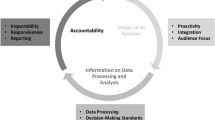Abstract
Residential encroachment into wildland areas places an additional burden on fire management activities. Prevention programs, fuel management efforts, and suppression strategies, previously employed in wildland areas, require modification for protection of increased values at risk in this interface area. Knowledge-based computer systems are being investigated as knowledge management tools for the organization, synthesis, and application of information pertinent to fire science utilization. Many such systems contain expertise which has been captured from human experts and symbolically encoded for automatic manipulation by computer. Two systems, fire characteristics prediction and initial-attack force dispatch, have been developed elsewhere using this approach. This paper describes a third project, which is currently being developed for wildfire prevention planning. Initial efforts in elicitation of knowledge from experts have produced several benefits prior to system implementation. Results to date in fire management are encouraging, and provide support for the future potential of these methods for the management of knowledge gained from fire research.
Similar content being viewed by others
References
Rice, C. L., “What will the western wildlands be like in the year 2000⋯Future perfect or future imperfect?” InProceedings of the symposium on wildland fire 2000, USDA Forest Service Gen. Tech. Rep. PSW-101, Pacific Southwest Forest and Range Experiment Station, Forest Service, U.S. Dept. Agric., Berkeley, CA, p. 27 (1987).
Bradshaw, W. G., & Johnson, R., “Fire prevention planning: Fire loss reduction,”Fire Technology (In Press).
Franklin, S. E., “Urban-wildland fire defense strategy, precision prescribed fire: The Los Angeles County approach,” InProceedings of the symposium on wildland fire 2000, USDA Forest Service Gen. Tech. Rep. PSW-101, Pacific Southwest Forest and Range Experiment Station, Forest Service, U.S. Dept. Agric., Berkeley, CA, pp. 23,24. (1987).
Tokle, G. O., “The wildland/urban interface in 2025,” InProceedings of the symposium on wildland fire 2000, USDA Forest Service Gen. Tech. Rep. PSW-101, Pacific Southwest Forest and Range Experiment Station, Forest Service, U.S. Dept. Agric., Berkeley, CA, pp. 49,50. (1987).
Rauscher, H. M., “Increasing scientific productivity through better knowledge management,”AI Applications in Natural Resource Management 1 2 p. 23 (1987).
Schmoldt, D. L., & Martin, G. L., “Expert systems in forestry: Utilizing information and expertise for decision making,”Computers and electronics in agriculture, Vol.1 pp. 233–250 (1986).
Van Lohuizen, C. W., & Kochen, M., “Introduction: Managing knowledge in policymaking,”Knowledge 8 p. 5 (1986).
Mills, Jr., W. L., “Expert systems: Applications in the forest products industry,”Forest Products Journal 37 9 p. 41 (1987).
Fischer, W. C., “The fire effects information system,” InProceedings of the symposium on wildland fire 2000, USDA Forest Service Gen. Tech. Rep. PSW-101, Pacific Southwest Forest and Range Experiment Station, Berkeley, CA, pp. 128–132 (1987).
Buchanan, B. G., & Duda, R. O., “Principles of rule-based expert systems,”Advances in Computers 22 pp. 164–216 (1983).
Nau, D. S., “Expert computer systems,”Computer 16 2 pp. 63–85 (1983).
Stock, M., “AI and expert systems: an overview,”AI Application in Natural Resource Management 1 1 pp. 10–13 (1987).
Rauscher, H. M., “Expert systems for natural resources management,”The Compiler (In Press).
Kourtz, P., “Expert system dispatch of forest fire control resources,”AI Application in Natural Resource Management 1 1 pp. 1–8 (1987).
Davis, J. R., Hoare, J. R. L., & Nanninga, P. M., “Developing a fire management expert system for Kakadu National Park, Australia,”Journal of Environmental Management 22 pp. 215–227 (1986).
Yazdani, M., “Intelligent tutoring systems: An overview,”Expert Systems 3 3 pp. 154–160 (1986).
Clancey, W. J., & Letsinger, R., “NEOMYCIN: Reconfiguring a rule-based expert system for application to teaching,”Readings in medical artificial intelligence: The first decade Clancey, W. J., & Shortliffe, E. H. (Eds.), Addison-Wesley, Reading, MA, pp. 361–381 (1981).
Davis, R., Buchanan, B. G., & Shortliffe, E. H., “Production rules as a representation for a knowledge-based consultation program,”Artificial Intelligence 8 1 pp. 15–45 (1977).
Anderson, J. R., & Reiser, B. J., “The LISP tutor,”BYTE 10 4 pp. 159–175 (1985).
Johnson, W. L., & Soloway, E., “PROUST,”BYTE 10 4 pp. 179–190 (1985).
Imlah, W., & du Boulay, B., “Robust natural language parsing in computer assisted language instruction,”Systems, 13, 2, pp. 115–127.
Anderson, J. R., Boyle, C., & Yost, C., “The geometry tutor,”Proceedings of the international joint conference on artificial intelligence, pp. 245–251 (1985).
White, B. Y., & Frederiksen, J. R., “Intelligent tutoring systems based upon qualitative model evolutions,”Proceedings of AAAI-86, Fifth national conference on artificial intelligence Morgan Kaufmann, Altos, CA, pp. 313–326 (1986).
Woolf, B., Blegen, D., Jansen, J. H., & Verloop, A., “Teaching a complex industrial process,”Proceedings of AAAI-86, Fifth national conference on artificial intelligence Morgan Kaufmann, Altos, CA, pp. 722–728 (1986).
Shields, T. J., Silcock, G. W. H., Donegan, H. A., & Bell, Y. A., “Methodological problems associated with the use of the Delphi technique,”Fire Technology 23 3 pp. 175–185 (1987).
Author information
Authors and Affiliations
Rights and permissions
About this article
Cite this article
Schmoldt, D.L. Knowledge management: An application to wildfire prevention planning. Fire Technol 25, 150–164 (1989). https://doi.org/10.1007/BF01041423
Issue Date:
DOI: https://doi.org/10.1007/BF01041423




